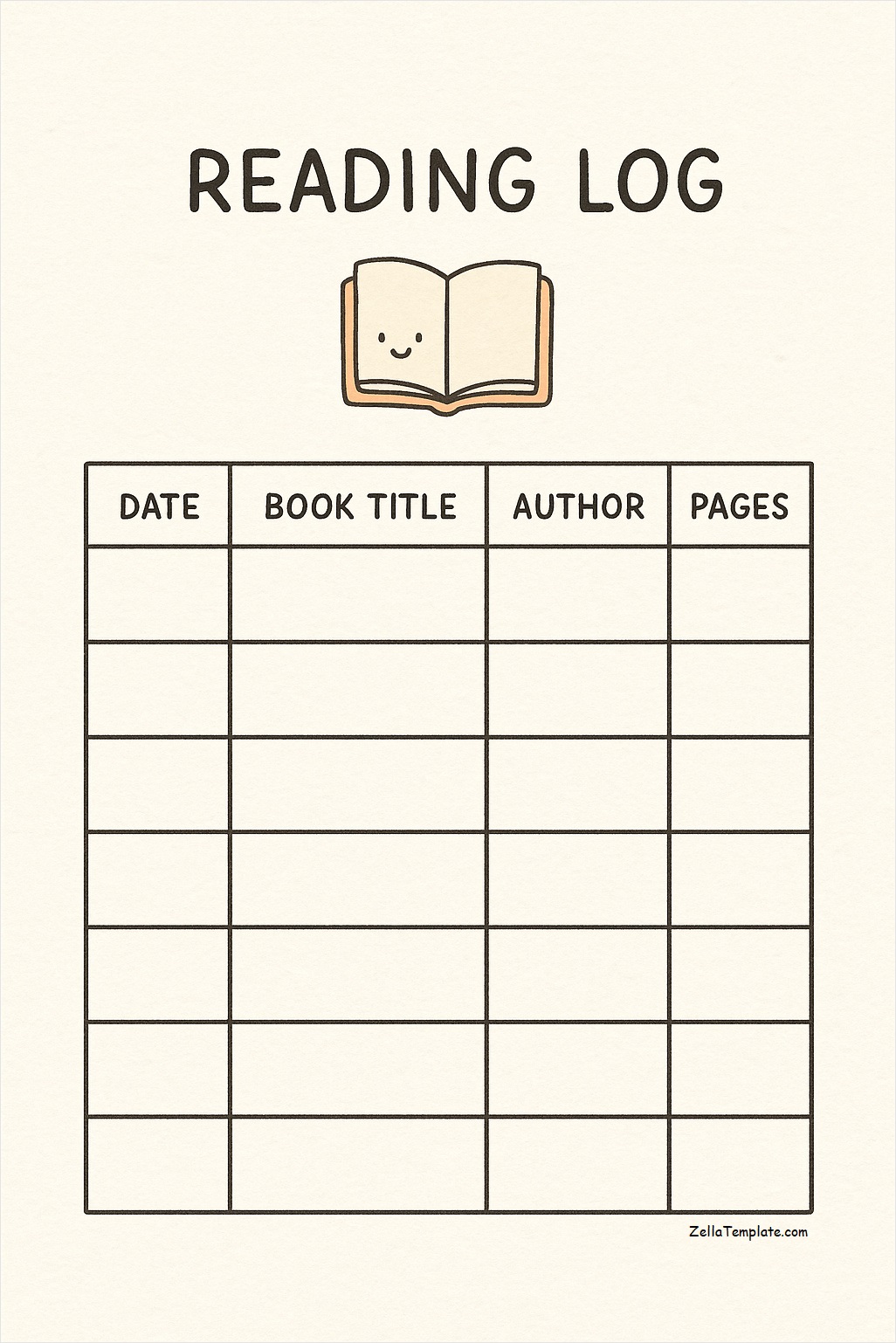Reading is a fundamental skill that opens doors to endless possibilities. Whether you are a student, avid reader, or seeking better comprehension, a reading log can help track progress, foster reflection, and encourage deeper engagement with texts.
Table of Contents

This guide explores what a reading log is, how it works, its benefits, its role in children’s development, and tips for maximizing your reading experience.
What Is a Reading Log?
A reading log is a journal or notebook for recording book details such as title, author, genre, dates, and personal reflections.
It acts as a personal record of reading progress, helping track habits, set goals, and improve comprehension and critical thinking.
Benefits of Maintaining a Reading Log
There are numerous benefits to maintaining a reading log, including:
- Enhanced Comprehension. By engaging with the text and reflecting in your reading log, you can enhance your understanding of the material.
- Improved Memory. Writing down key points and reflections can help you remember important information from the books you read.
- Goal Setting. It lets you set specific goals, like reading a set number of books monthly or exploring different genres.
- Personal Growth. Reflecting on your reading experiences can lead to personal insights, growth, and self-discovery.
- Accountability. It holds you accountable for your reading goals and helps you stay on track with your commitments.
How a Reading Log Works
Using a reading log is a straightforward process that can yield significant benefits for your reading journey. Here’s how it works:
- Start by Choosing a Format. Decide whether to keep a physical journal, use a digital app, or create a spreadsheet to track reading progress.
- Record Key Book Details. Write down the title, author, genre, and other relevant information for each book you read.
- Add Personal Reflections. After finishing a book, take some time to reflect on the content and jot down your thoughts, insights, and reactions in your reading log.
- Set Reading Goals. Use your reading log to set specific goals for your reading habits, such as trying new genres, reading a certain number of pages per day, or completing a series.
- Review and Reflect. Periodically review your reading log to track your progress, identify patterns in your reading habits, and reflect on your overall reading experience.
Creating a Personalized Reading Experience
Your reading log is a reflection of your unique reading journey and preferences. Consider customizing it to suit your style and needs:
- Design Your Layout. Choose a layout that works best for you, whether it’s a simple list format, a detailed template with multiple sections, or a digital interface with interactive features.
- Add Visual Elements. Incorporate visuals like book covers, illustrations, or color-coded tabs to make your reading log visually appealing and engaging.
- Include Inspirational Quotes. Write down quotes from the books you read that inspire you, make you think, or resonate with your own experiences.
- Create Reading Challenges. Challenge yourself to read outside your comfort zone, explore new genres, or participate in reading challenges to keep your reading log dynamic and exciting.
- Share Your Progress. Share updates from your reading log with friends, family, or online communities to gain feedback, recommendations, and support in your reading journey.
Tips to Get the Most Out of Your Reading Log
Here are some additional tips to help you maximize the benefits of maintaining a reading log:
- Make Time for Reading. Set aside dedicated time each day for reading and reflection to ensure you stay consistent with your reading log.
- Join a Book Club. Participating in a book club can provide you with a community of readers to discuss books, share recommendations, and gain new perspectives on your reading material.
- Experiment with Different Formats. Try different formats for your reading log, such as bullet journaling, digital spreadsheets, or online platforms, to find the one that works best for you.
- Take Breaks Between Books. Allow yourself time to digest and reflect on a book before moving on to the next one to fully appreciate and absorb the content.
- Set Reading Challenges. Challenge yourself to read a certain number of books in a year, explore a new genre each month, or revisit classics you haven’t read since school to keep your reading log exciting and diverse.
Reading Log Template
Start using our free reading log template today to track books read, record your thoughts, and stay motivated on your reading journey.
Reading Log Template – Word